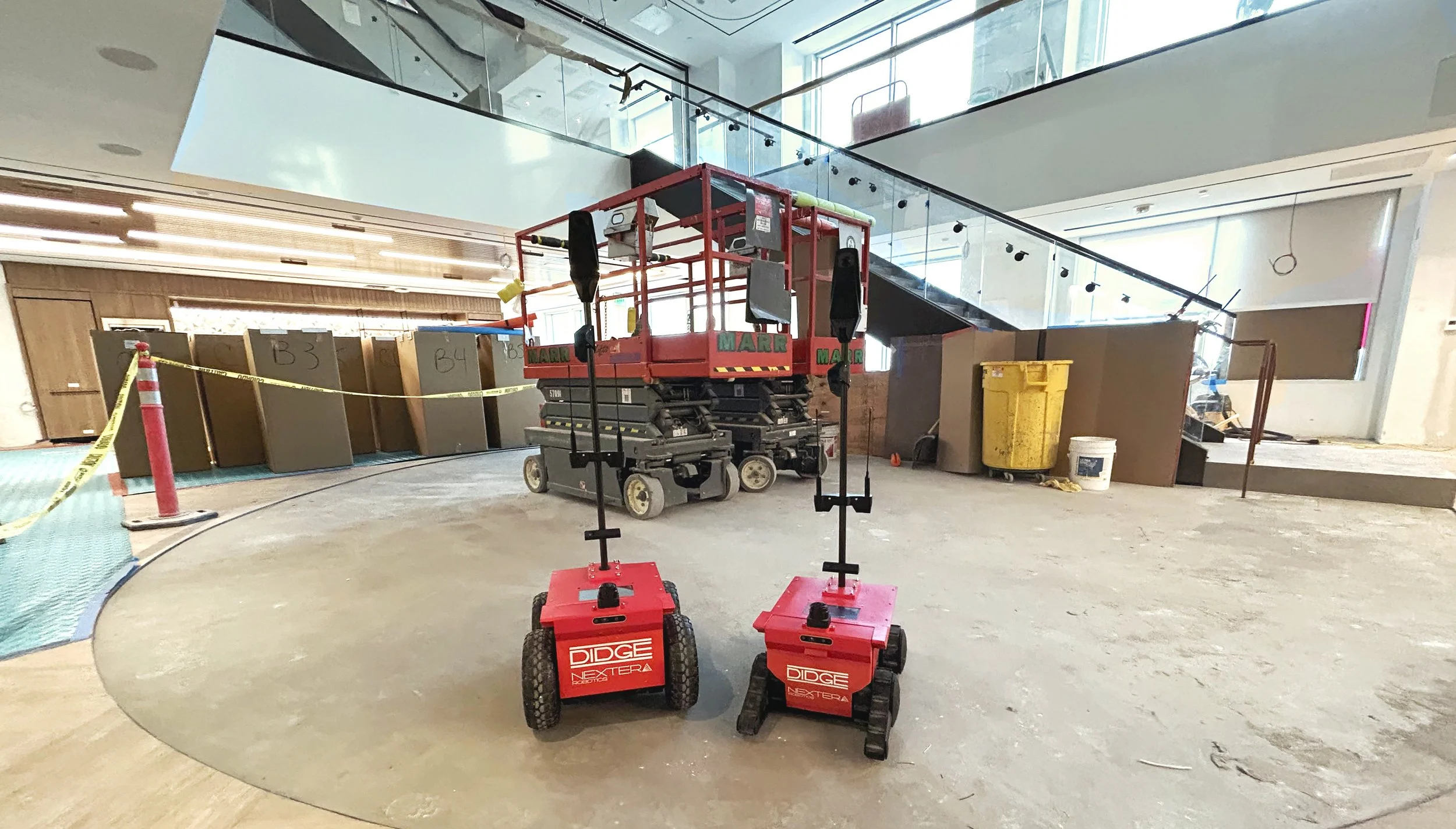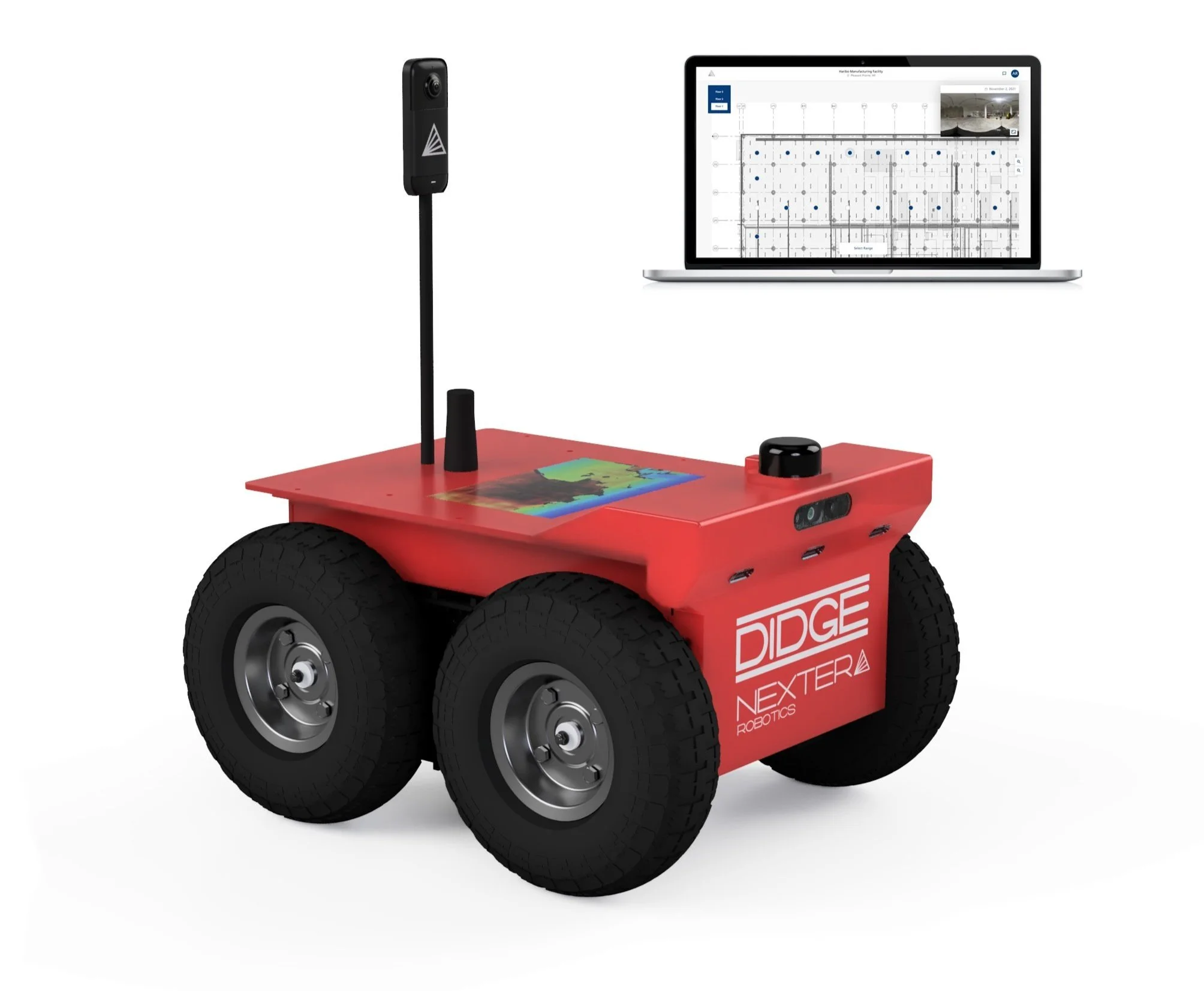
DIDGE Autonomous Robots Advantage
Automatically capture entire site at any interval
Robots run on a daily, weekly, bi-weekly basis. Whatever you set. No more chasing supers down to make sure they do image capture. Capture high-quality 360 images at hundreds of predefined locations again and again.
Robotic image capture is essential for reliable AI results
Input image quality is vital for AI. Low-resolution, blurry, or dark images lead to faulty percent-in-place estimations and incorrect safety warnings. Traditional data capture involves walking the site recording a video with hardhat-mounted cameras, then taking screenshots from the video. It yields low-quality images due to motion blur and limited exposure.
Unlike humans, autonomous robots carefully stop for each shot, ensuring exceptional 360-degree images even in challenging lighting conditions. This enables Didge AI to extract consistent, actionable insights with extremely high accuracy.
Full Autonomy
Full autonomy on construction sites presents immense challenges: active foot traffic, ongoing work, dust and water on the ground, and constantly changing floor layouts. Didge's complete onboard autonomy enables robots to navigate any job site, climb stairs, and avoid people, equipment, obstacles, and holes.
The robot's navigation "brain" resembles that of a self-driving car, relying on an array of cameras, depth sensors, lidars, inertial measurement units, and motor sensors. It is created using data collected over thousands of hours of driving inside active construction sites.
Collaborative work of a fleet, no human effort needed
“Leave and forget” - schedule weekly or daily scans once at the beginning of the project. The robots start on their own at the scheduled time, navigate to points, climb between floors, park for recharging when done.
Didge platform distributes the task between all the robots deployed at a particular job site based on each robot’s location, battery level, stairs and hoists availability, designated no-go zones, known obstacles, charging station locations.
Long-range, robust, safe, cost-efficient machines
Didge robots are designed for optimal operational efficiency: they are quick to assemble, easy to repair or upgrade, can run for up to 6 hours on a single battery charge, are extremely reliable and safe on stairs.
In contrast, other solutions like legged robots* have yet to achieve real-world usability: they provide under 40 minutes of effective autonomy per charge, cost up to 10 times more per unit, and pose a constant risk of falling on stairs.
*Didge Autonomy is built to support any type of mobile robot. As soon as a new type becomes practical, including legged robots, it can be integrated into the fleet within a matter of weeks.
Military-grade mesh network and charging infrastructure
Maintaining robust communication on construction sites is challenging due to dense walls and floors obstructing WiFi and LTE signals. Didge robots come equipped with a high-power communication mesh network. Built with military-grade equipment, it works through walls, and just 3-4 radio units can cover an entire building. If a robot ever enters a "blind spot", others can move and relay the network signal to that robot.
Didge robot charging stations offer extra-fast recharging and support autonomous parking. The Didge infrastructure operates effectively in the harshest construction conditions, including water, dust, cold, and heat.




